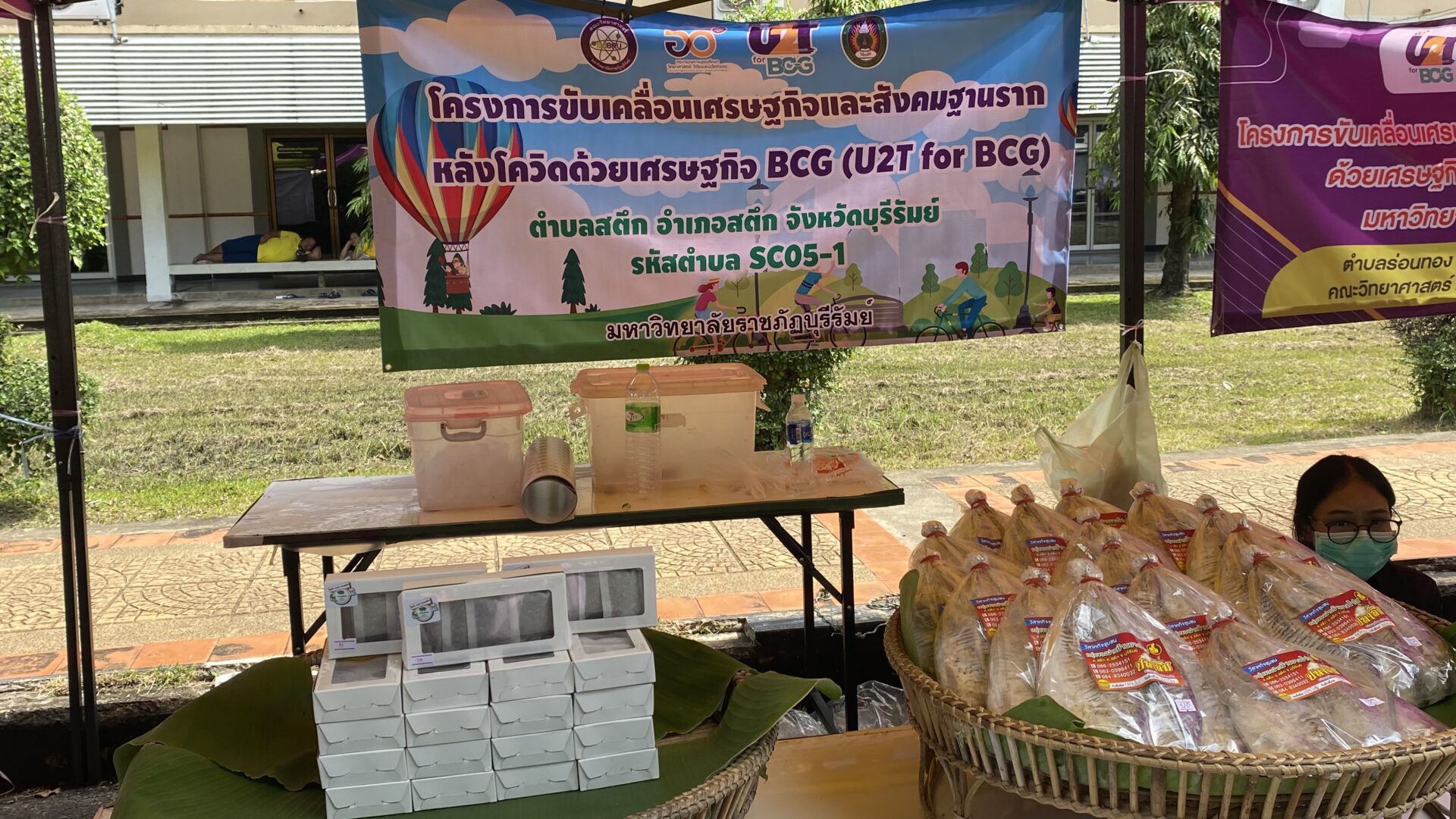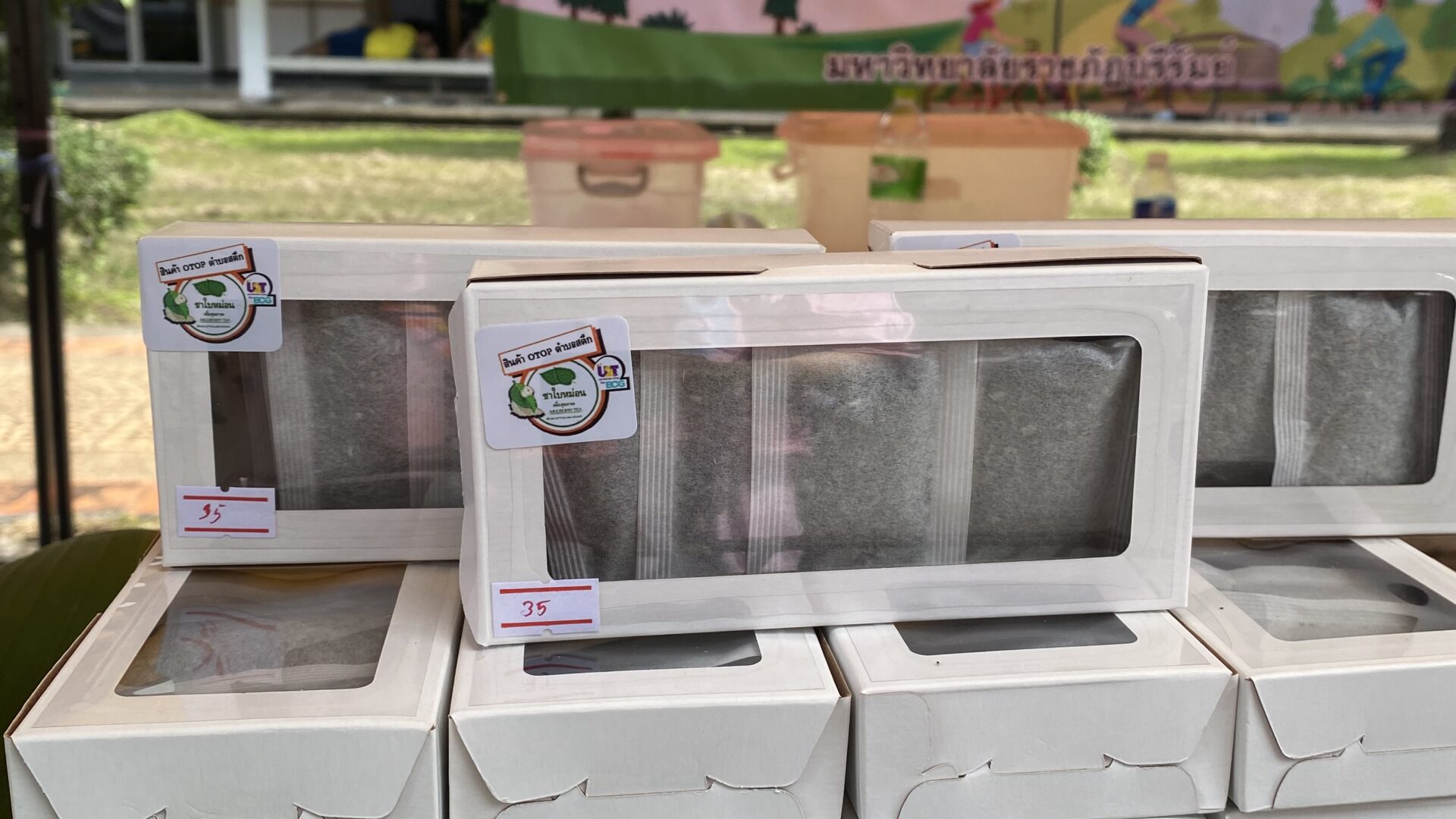“Dyeing reeds with natural colors”
Miss Suparat Urairam
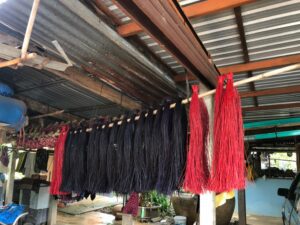
The process of dyeing reed threads with natural colors
Natural reed dyeing has 2 important components:
- plants that are natural sources of color It is the same plant that is used in dyeing fabrics and textiles such as butterfly pea flowers, padauk bark, and deer leaves, etc. These coloring agents are prepared in the form of aqueous solution as a solvent.
- Color fixing agent (Mordant) has a duty to help the color stick on the reed line. Color fixing agents that are commonly used in natural dyeing processes are mainly divided into 2 major types:
-
- Chemical colorants are metal salts of aluminum (alum), iron (ferrous sulfate), copper (juncolor), etc.
- Natural colorants are natural compounds such as tannins, alum, lime juice, natural acids, ground water, mud water, etc.
There are 3 ways to use color fixing agents in natural dyes:
- The use of color fixing agents before dyeing (Pre-mordant) is the use of fibers to be dyed with color fixing agents before use.
to natural dyes - Use of color fixing agents with staining (Meta-mordant) is the addition of a color fixing agent to the color water and then
dye the fibers - The use of color fixing agents after dyeing (Post -mordant) put the fibers dyed in colored water first and then dyed with
color fixing agents.
For the reed dyeing technology with natural colors of the products and textiles. Use alum and substitute. Nin is a color fixing agent through the process of using a color fixing agent before dyeing. There is a mechanism for the reaction that begins with the formation of a chemical bond between tannin and aluminum ions to form a complex compound. Serves to connect natural colors with reed lines. The tannin structure is bonded to the reed line. structured as cellulose The aluminum ions will bond with the natural color molecules.
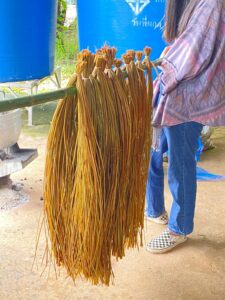

Procedures for dyeing reed threads with natural colors
- Soak the dried reed noodles in warm water for 1 hour before bringing the reed noodles to dry.
- Prepare a color fixing solution by dissolving alum in boiling water, then alkalinizing it with sodium bicarbonate.
- Soak the reed noodles in item 1 in a solution that helps the color to stick, increase the heat until it boils gently for 1 hour, then bring the reed noodles up to drain.
- Prepare a tannin solution in hot water. Soak the reed noodles in item 3 for 1 hour before bringing the reed noodles up to dry.
- Prepare a solution that helps to make the color stick like number 2.
- Soak the reed noodles in item 4 for another 1 hour before bringing the reed noodles up to drain.
- Prepare a dye solution (such as butterfly pea flowers, padauk bark, Malabar leaves) by boiling the material to give a natural color in hot water for 1 hour. then add salt
- Put the reeds in item 6 into the boiling water for 1 hour.
- Bring the reed up to dry.

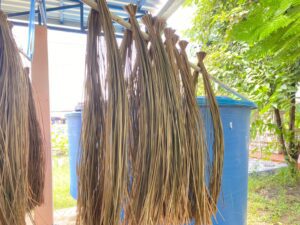
 Pictures of the reed dyeing process
Pictures of the reed dyeing process


